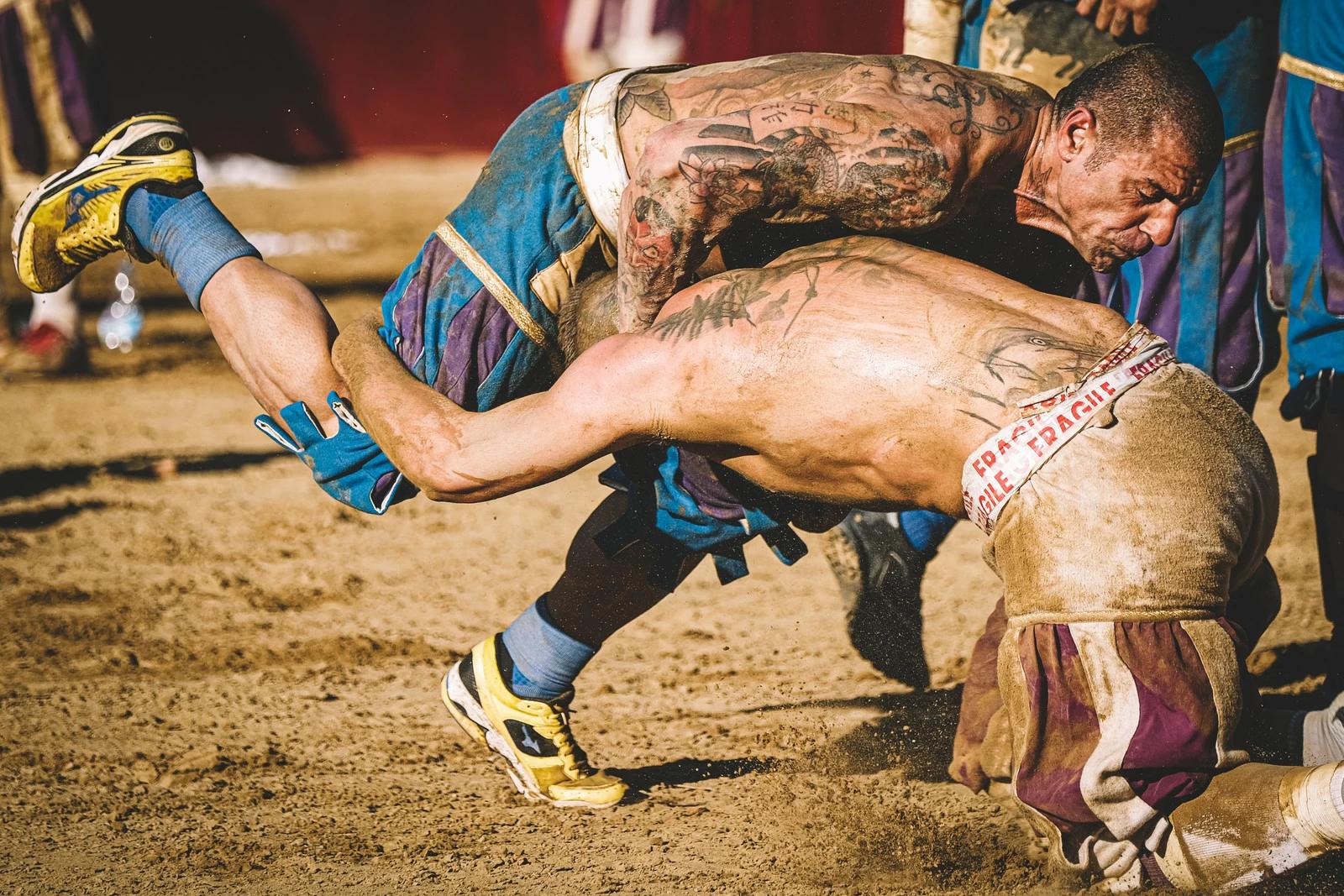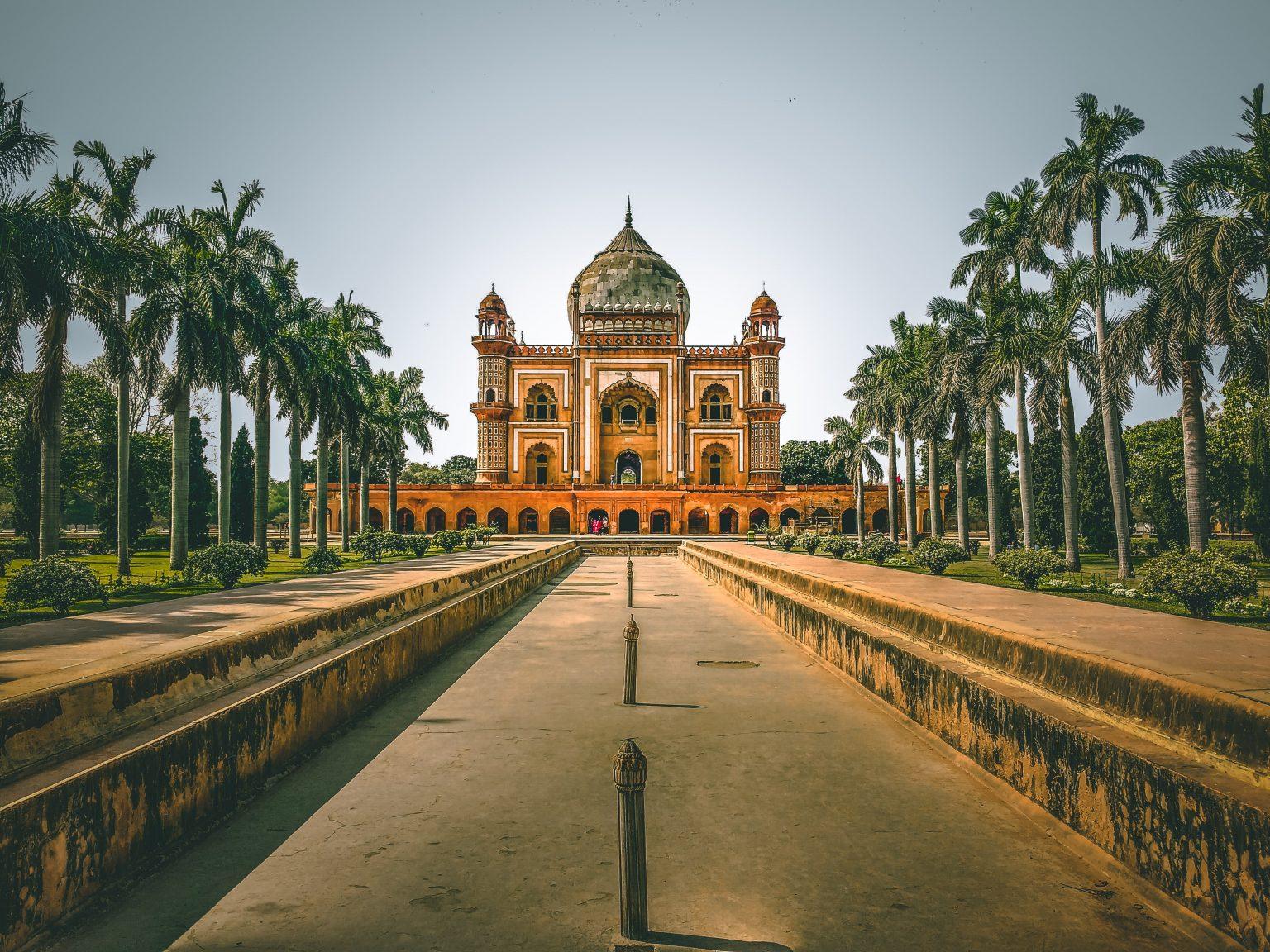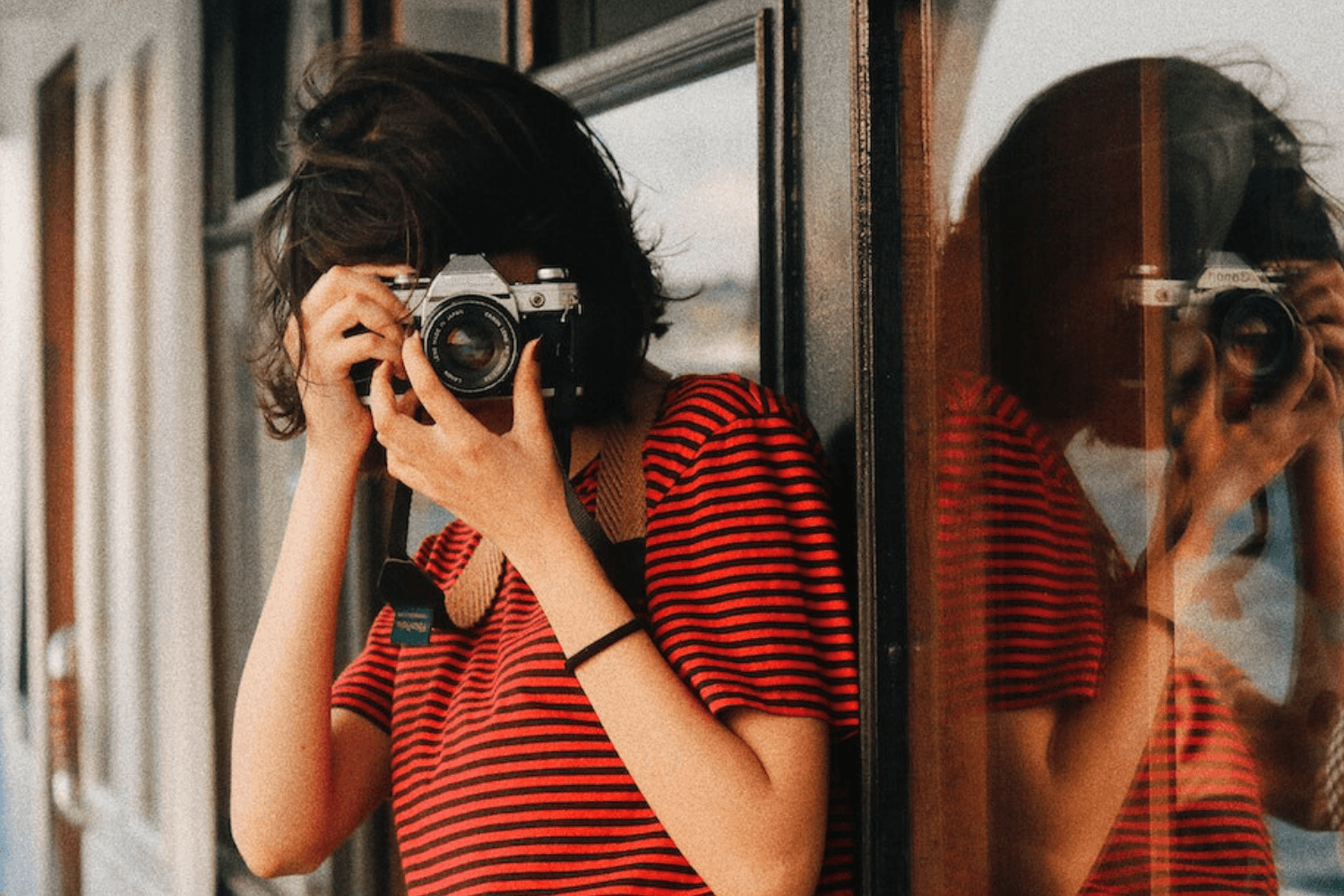11 Ways to Make Money With Photography
Leighton Emmons
Tue Apr 06 2021

For most people, photography is their passion. Which is why finding ways to make a living from doing it is so desirable. We all dream of making money doing what we love.
Here we outline all the different ways you can leverage your photography skills and your photo library to help make you money. But keep in mind, at the end of the day, a professional photographer is only as successful as their commitment and creativity, so be prepared for lots of hard work because there are no short cuts to making money in this highly competitive industry.
1. Selling digital licenses online
With a website of your own, clients can purchase directly from your site or contact you to purchase your images. This is great because you’re in control of everything from prices, to rights, to who you choose to sell to and you don’t need to pay commission to a third party.
If you need to read more about how a portfolio website can valuable to your career as a photographer, read our article here on 15 reasons why a portfolio website is important.
Be aware though, having a portfolio website won’t instantly convert into more sales.
Your main issue with a website is going to be generating traffic and getting exposure. To sell your images you’ll need to be connected with buyers, which starts by getting your work in front of their eyes. This is, of course, easier said than done. You might want to consider some of these tips to help boost your online selling efforts:
- Improving your website’s SEO: This is the process of ranking higher in Google. It’s crucial for building traffic to your site so you’ll want to rank as high as possible for keywords in your particular photographic niche. Check out our article on 4 ways to improve SEO for photography websites for some useful pointers.
- Having a simple, easy-to-navigate website: Having a portfolio website that is well organized and attractively laid out will help tremendously in enabling visitors to easily discover and appreciate your work. It sounds obvious, but make sure you present your most impressive images on your homepage so they get the most exposure and draw potential clients in.
- Price fairly (competitively): It’s worth researching baseline prices for images. You can easily do this by checking out rates on existing media platforms like www.gettyimages.com or www.alamy.com where you can select images and then calculate prices based on how the image will be used.
2. Selling prints
If you’re struggling to generate sales through your website, you may want to consider selling prints in venues like galleries, cafes, restaurants and other high profile public venues. Indeed, some online services offer the ability to sell prints through your website too.
Sure, selling prints will require significantly more hands-on, intensive work from your end (correcting files, outputting prints and getting them framed all takes a lot of time), but it will almost certainly do a lot for building your reputation.
Consider these tips for doing so:
- Selling framed prints: Digital copies can only sell for so much. If you go the extra mile to print and properly frame your images, those images instantly become a polished end-product (meaning you can charge a lot more for them). A great place to sell these framed photos is in public venues with high foot-traffic or high-end cafes, restaurants and hotels.
- Consider lending out a few prints: If you can get your work displayed in some prominent locations, the visibility might lead to enquiries and sales or perhaps even some commissions. An important part of selling prints is developing a reputation and to do that you have to get your work out there as much as possible. Consider lending your prints to venues like restaurants or cafes.
 A person walks past Confino Tower during the preparation for the 32nd edition of the Turin International Book Fair. Confino Tower is designed by François Confino and it’s a symbol of the latest editions of the Turin Book Fair. Photo and story by Nicolo Campo
A person walks past Confino Tower during the preparation for the 32nd edition of the Turin International Book Fair. Confino Tower is designed by François Confino and it’s a symbol of the latest editions of the Turin Book Fair. Photo and story by Nicolo Campo
3. Selling your travel stories
The great thing about travelling for photography is the whirlwind of experiences and unexpected encounters that often accompany it. If you’ve ever traveled for photography, you’ve undoubtedly got a few stories of your own.
Though this is a very competitive sector, travel stories are great fun to write and photograph. There are a whole bunch magazines out there who need this type of content. Think of airline magazines for example.
But you’re not just limited to magazines or newspapers. Any organization related to travel could be a potential client. Airlines, tour operators, travel companies like Agoda, Trivago, Hotels.com, and even smaller local magazines near you might be interested in featuring creative stories around travel experiences. Be aware, though, that a lot of these companies now source their material from online services like Getty Images or Shutterstock.
If you’ve never written or published travel works, consider these steps below as a way of breaking in:
- Working for free, before working for a fee: Creating great free content for small time publishers could be a sound way to begin building a portfolio of written content. Think small magazines published by volunteers – they’re almost always looking for content to publish. Once you’ve got a portfolio, you’ll have more leverage in requesting payment.
- Being good at writing: If you can combine great photos with great writing, you’ve instantly got an edge over most contributors. You don’t need to be the world’s most artistic storyteller, you just need to write compellingly – find an angle, be concise, and look for a strong narrative.
- Doing your research: Be sure you know about the organization or company you’re looking to collaborate with. They will only work with you if they know cooperation will be smooth, so you’ll need to reassure them your style matches what they’re looking for. The hardest thing is to get started, so you might want to be flexible on pricing when you’re starting out, so you can get those crucial first few publications and build a more convincing portfolio of published work.
4. Shooting for clients
The best way to earn a living from photography is to build a portfolio of clients who will commission you to shoot for them. Most often you’ll need to agree a day rate. That should represent the time you’re investing – but not include any additional costs like travel, hotels, meals and communications etc. Alternatively, if you prefer the flexibility, you could define a project fee and spend as long as you like to get the right pictures. The fee might be all-in (including expenses) or just a professional fee, to which expenses would be added.
Some of the best areas to look for commission in are as follows:
- Maternity photo shoots
- Professional headshot portraits
- Corporate photography
- Event photography
- Fashion photography
- Product photography
- Pet photography
For a look at which of these photography genres are going to be most profitable and pay you the most for your time, check out our article on 9 most profitable photography genres.
It’s important to also do your own research on what other local photographers are charging so you can keep your prices competitive.
5. Licensing your images
There are a few different ways you can license your images.
The Big Players
At the top of the pile you’ve got your big-player platforms, like Getty Images and Alamy that license pictures and video for standard industry fees usually based on how the file will be used. These services are aiming for the biggest budgets. Sometimes images can be licensed for thousands and even tens of thousands of dollars, though most sales are much, much smaller.
Getty is really only interested in full time professionals who are producing lots of high quality images. You have to apply and be approved to become a Getty contributor, which isn’t easy as their standards are very high. But as the market leader, the pay off in sales can definitely be worth it.
Alamy on the other hand is open to all. The only criteria is image quality and comprehensive file information. Alamy also has a large client base, although photographer members report that returns from stock placed with Alamy are generally lower than with Getty, though of course much depends on the quality and type of content you’re uploading.
Micro-stock platforms
Down a notch from the big players, there is a bunch of online sales portals known as micro-stock platforms, like Shutterstock, Istockphoto, Dreamstime and Fotolia, where pictures are licensed for very small fees (a few dollars or tens of dollars), usually with very broad usage rights (known as royalty free) too.
It’s easier to become a contributor on these micro-stock platforms as compared to the big players (though you will still need to demonstrate technical expertise). It’s important to consider that low-barrier to entry means lots more competition. Shutterstock supposedly receives a staggering 150,000 image submissions a day.
Freebie sites
And there are even some new platforms that outdo the micro stock services by giving away pictures to use for free, like Pexels. Obviously uploading pictures to these sites, isn’t going to do much for your bank balance.
To have your images listed on these sites, you’ll need to be a verified contributor, which only comes with demonstrating exceptional photographic quality and photographing uncovered topics.
Standing out from the crowd
If you’re going to differentiate yourself on these stock image sites, consider these tips:
- Being unique: Sometimes the right approach is photographing a story no one else has covered, that way there’s no competition with the subject matter of your images.
- Create relatable images: If your images are too unique or subject matter to extreme and arty, no publisher will be able to use your images. Consider photographing more generic scenes but executing your images with rigorous attention to quality (exposure, subject matter, lighting and composition). If you consistently produce original, relatable, high quality work, you’ll eventually start making sales.
- Keyword appropriate: Be sure to tag your images with relevant keywords. If you’re careless or lazy with tagging, your images risk getting buried beneath the competition and never being discovered. Less is more where keywording is concerned, just add a few words that describe the main elements and meaning of your picture.
 FLORENCE, ITALY – 2019/06/16: Calcio fiorentino (also known as calcio storico “historic football”) is an early form of football and rugby that originated in 16th-century Italy. Once widely played, the sport is thought to have started in the Piazza Santa Croce in Florence. In the photo: The semi final match between Bianchi and Azzuri Teams. Photo and story by Federico Tardito
FLORENCE, ITALY – 2019/06/16: Calcio fiorentino (also known as calcio storico “historic football”) is an early form of football and rugby that originated in 16th-century Italy. Once widely played, the sport is thought to have started in the Piazza Santa Croce in Florence. In the photo: The semi final match between Bianchi and Azzuri Teams. Photo and story by Federico Tardito
6. Assisting other photographers
All professional photographers, no matter the level, will always need help at some point. You may want to consider working as an assistant to an established professional.
Assisting a professional photographer gives you industry experience and allows you to learn the tricks of the trade on the job. More than that, it can also help grow your network of photographer contacts and may even allow you to establish relationships with potential clients. Think of these as residual benefits on top of the fact you should also be getting paid for your time.
Photographers who work on day contracts like event, wedding, and product photographers often need help in setting up shoots, managing gear and even capturing images from other angles.
It might help to reach out to other photographers through online channels like forums, subreddits, or Facebook groups to find photographers near you who are looking to hire some part-time help.
7. Building a blog or Youtube channel
If you’ve got something to say, people will listen. Better yet, if you can get enough people to follow, subscribe, or just tune in, you’ll have the opportunity to monetize some of the attention people are giving to you.
Blogs can earn money through ads and sponsored content. You can choose to place Google Display ads on your blog and offer sponsored content packages to interested publishers.
Simialrly with Youtube, you can opt for ads to be shown on your videos and also do sponsored content with a complementary business (like camera gear). Keep in mind though, you will need to have a sizable and meaningful group of followers before you begin making money from this.
If you’re struggling to think of what kind of content you could be generating, maybe these suggestions could fuel some inspiration:
- Tutorials: Give a step-by-step tutorial on how to do a specific process. Like, using Photoshop to enhance images, or how to adjust camera settings.
- Tips & Tricks: Outline the little nuances that go into producing a great photographic piece. What to look for and how to capture it. Readers are always dying for expert know-how.
- Reviews: Review new pieces of photographic equipment, photographic projects, or simply review different photos. Give your opinion on what works, what doesn’t, and why you think something is the best in its photographic category.
8. Teaching/Mentoring others
If you’ve already got a few years of experience photographing at a professional level, you may be able to leverage your skills into teaching (having teaching experience would be a big advantage).
It’s important to remind here that photographers of ALL ages are looking to learn and improve their photography, so don’t get hung up about teaching a certain type of photographer. Photography is a hobby and passion, open to people of all ages.
Teaching and educating others on your skills and talents can come in a variety of formats.
- Writing a book: Choose a photography related topic that you have strong knowledge and experience with. It’s relatively easy to self-publish through an e-book, though don’t expect to earn much from this.
- Writing articles for a blog: Photography based blogs like [LightRocket]j(https://www.lightrocket.com/blog/) are always looking for new writers and meaningful content. If you’re a photographer who knows how to communicate and has interesting things to say, you can write content for blogs other than your own – most often you’ll just get the exposure but bigger blogs might pay for a good story too.
- Mentoring directly: People are always interested in learning, and more than that, they want to learn from people who know what they’re doing. Mentoring is a great opportunity to give one-on-one tutoring to photographers looking to hone their talents.
- Hosting workshops: Assuming you have enough credibility and a strong enough reputation, running a workshop is a great way to share your experience and skills with a group of people, as opposed to one-on-one sessions. Workshops also allow you to offer more accessible pricing to a group of participants.
- Online tutorial videos: You could choose to pre-record these, do them live, or do screen-sharing videos, it’s entirely up to you. A video helps you scale for reaching a wider audience faster as compared to doing face to face meetings (think back to the YouTube channel!). The issue here will be how you charge for accessing your videos. There are revenue opportunities through YouTube or alternatively you could start up an online school and charge course fees.
9. Entering photography competitions
Assuming your photos have what it takes to win, there’s always the possibility of entering your photos into photo competitions to win cash prizes.
There are lots of competitions every year. The winning photographers earn both renown and usually some handy prize money too.
Naturally, competitions are reserved for those experienced photographers with incredible shots. But keep in mind there are often a number of smaller, more local competitions near you. It’s worth hunting online to see if there’s a competition that would fit your style.
There are often photographic competitions for each niche, so while it might not be realistic that you win this year’s ‘Photo of the Year 2020’, there are smaller competitions where you could perhaps win some prizes.
Check out: Photo Contest Insider for a rundown of photo competitions near or relevant to you.
 Portrait of a young Mursi man holding a Kalashnikov. Photo and story by Jorge Fernandez
Portrait of a young Mursi man holding a Kalashnikov. Photo and story by Jorge Fernandez
10. Applying for photography grants
While this isn’t exactly a way to make money in the sense of ‘profit’, it could be a way of funding your photographic projects. This has potential to be leveraged later on as a way of earning some additional revenue.
Consider some of these large sum photography grants:
Spring:
- Aaron Siskind Foundation Grant – $15,000
- CENTER Project Launch and me&EVE Grant – $5,000
- Dorothea-Lange Paul Taylor Grant – $10,000
- Eugene Smith Grant – $40,000
- Inge Morath Grant – $5,000
- Getty Reportage Grant – $15,000
- Getty Where We Stand Grant – $3,000-10,000
- The Emerging Photographer Grant – $10,000
Summer:
- Lucie Foundation Grant – $1,000-5,000
- International Photography Awards – $500-10,000
- Getty Array Grant – $5,000
- Getty Woman Photograph Grant – $10,000
- Firecracker Grant – $2,000
- Carmignac Photojournalism Award – $60,000
- Reminders Photography Stronghold Grant – Unknown
Fall:
- Alexia Grant – $20,000
- International Photography Grant – $1,000
Winter:
- CBRE Photographer of The Year Award – $10,000
- HIPA Photography Competition – $4,000-120,000
- Manuel Riviera-Ortiz Foundation Grant – $5,000
- Getty Disability Stories Grant – $5,000-10,000
- Howard Chapnick Grant – $5,000
We’ve compiled a comprehensive list of these photography grants in this article 22 photography grants to follow for 2020 for you to read more about.
11. Specializing in a niche: building a business around it
We give this its own category because its worth emphasizing the need to specialize in a given niche if you’re looking to make a serious business out of your photography. It often helps to identify what photographic genres you’re most passionate about and go from there.
The more niche your speciality is, the more likely it is you can build a business out of it.
For example, take bridge construction photography. That is, taking photos of bridges while they’re in construction.
Believe it or not, this is a legitimate photographic niche.
You would only need a few projects before you would’ve built strong relationships with contractors and cemented yourself (no pun intended), as their ‘go-to’ photographer.
Now, why is specializing in a niche important?
Because the more specific your photography specialty is, the more you become an expert in that specific field. You’ll have more knowledge, expertise, and credibility for that given niche than most other photographers. This makes it a no-brainer choice for clients looking to hire. Example, a client looking to hire for a wedding is far more likely to hire a photographer who brands themselves as a wedding photographer than one who does not.
Furthermore, branding yourself under your specific niche not only makes it easier for clients to find you, but also for you to find them. Think about it, if you only shoot bridge construction photography, you wouldn’t need to message every business in the world if they need your services, you’d only message bridge contractors. Hence, specializing in a photographic niche will simplify your job of finding new work.
Written by Leighton Emmons.
Featured photography by Chris Lawton
To read more helpful articles on photography, check out our blog page.
Join our growing photographer community at LightRocket and get powerful archive management and website building tools for free!


